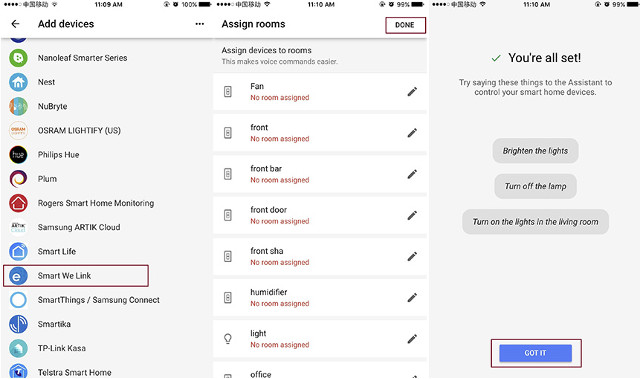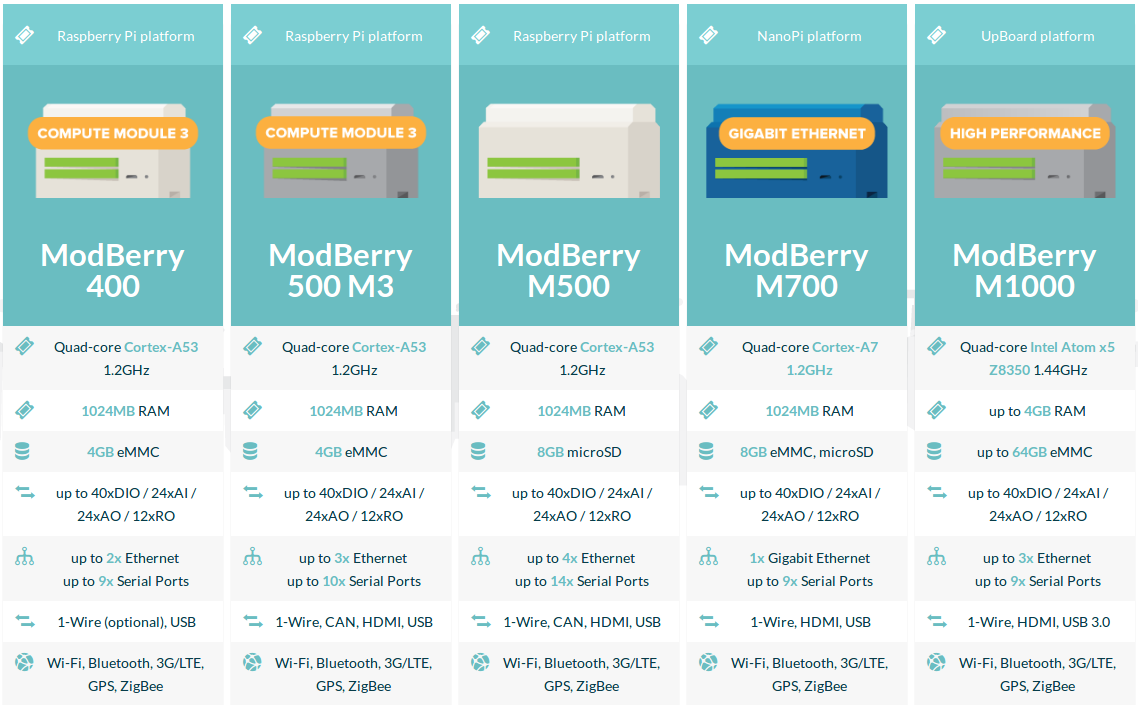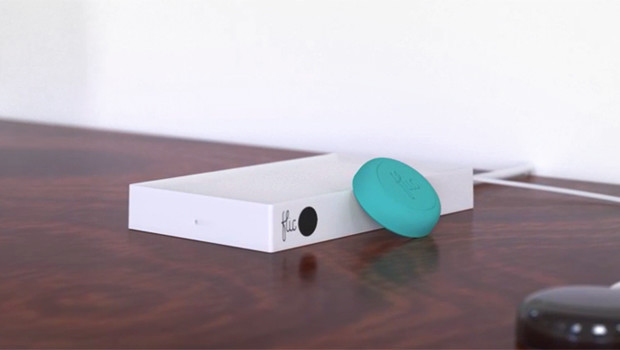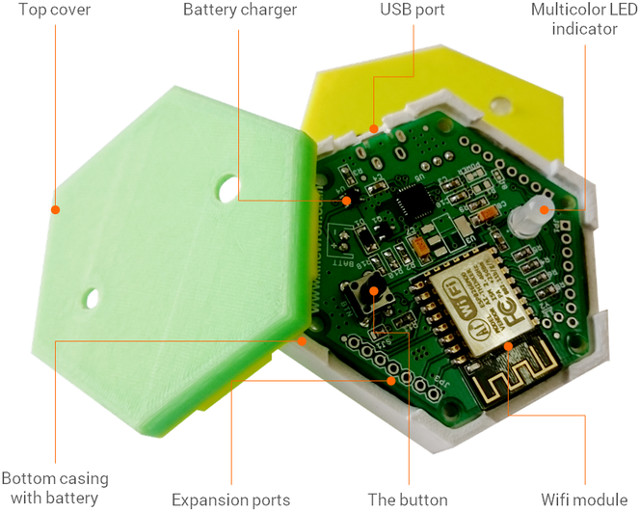X-Powers, a company better known to supply PMIC “companion” chip for Allwinner processors, also made some audio chips including AC108 is a chip specifically designed for microphone arrays with support for 4 microphones, and an I2C + I2S output interface to the host processor. Microphone arrays are particularly useful for smart speakers, and especially hot word detection (voice activity detection) as single microphone setups like I use with Orange Pi Zero, may have trouble detecting hot words like “OK Google” in noisy environments (music playing, alarm ringing…). X-Powers AC108 specifications: 108 dB dynamic range (A-weighted) @ 0 dB boost gain -90 dB THD+N (total harmonic distortion plus noise) @ 0 dB boost gain 4x programmable boost amplifiers with 0dB to 45dB in 3dB step ADC sample rates supported – 8kHz,12kHz,16kHz, 22.05kHz, 24kHz, 32kHz, 44.1kHz, 48kHz,96kHz Analog mixer and digital mixer in record data path 4x fully differential microphone inputs: MIC1P/N […]
Sonoff Wireless Switches & Light Bulbs Now Work With Google Home
ITEAD Studio Sonoff wireless switches can be controlled by voice commands using Amazon Alexa or Google Home, but so far, the latter was only possible by emulating Belkin Wemo switch in alternative open source firmwares such as ESPurna or Sonoff-Tasmota. For people who don’t want to update the firmware themselves, and instead prefer to use the stock firmware with eWelink mobile app, the manufacturer has now announced support for Google Home, on top of the already supported Amazon Alexa service. The instructions are explained in details in ITEAD’s blog post, but basically, you need to start Google Home app in your mobile, select your Google Home device, go to Home Control to add Devices, select Smart We Link, login to eWelink with your username/phone number and password, name the devices you want to control and you’re done. You should now be able to control devices or rooms with voice commands […]
HTTM Backlit Capacitive Touch Switch / Button Sells for about one Dollar
You may have some project that requires buttons to turn on and off devices, or perform other tasks like navigating a user interface or playing games. One interesting and inexpensive solution for this could be HTTM (HelTec Touch Model) capacitive touch buttons that include three pins for power, ground, and the button status, as well as a backlight. You’ll find them on many websites, and one of the cheapest option is a pack of 10 buttons going for $9.91 on Aliexpress. HTTM button specifications: Voltage input range: + 2.7v to + 6v Signal output – Voltage: + 3.3v; Current up to 500 mA Header – 3-pin with GND, VCC, and OUT Backlight color – red, blue (cyan), or yellow Dimensions – 20.4 x 16.6 mm Operating temperature range: -30 ℃ to + 70 ℃ You’ll find more details on the manufacturer’s product page including a user manual (Chinese only), and […]
Sonoff G1 AC Powered Smart Power Switch Works Over 2G GSM/GPRS
Today, I’ve searched for AC powered wireless switched similar to Sonoff devices, but with ESP32 instead in order to get WiFi and Bluetooth, since the latter is better to use with a battery powered buttons. I did find a DC powered board, but no AC powered ones yet. However, as I visited ITEAD website to check if they had anything of the sort, I discovered they had a new model called Sonoff G1, similar to Sonoff TH16, but instead of using WiFi, you can use 2G GSM/GPRS to control the switch remotely. Sonoff G1 specifications: Wireless Module – ST86 quad band GSM/GPRS module GSM/GPRS connectivity GSM850, EGSM900, DCS1800 and PCS1900 MHz support GPRS multi-slot class 10, GPRS mobile station class B 1.8V, 3V SIM card slot Transmit power: Class 4 (2W): GSM850, EGSM900; Class 1 (1W): DCS1800, PCS1900 Relay – Up to 16A (3000 Watts max) Terminals – 6 terminals […]
ModBerry Industrial Automation Controllers Leverage Raspberry Pi, FriendlyELEC, and AAEON Boards and Modules
TECHBASE’s ModBerry Linux based industrial controllers have been around since 2014 with their first model being ModBerry 500 powered by a Raspberry Pi compute module. Over the years, the company has kept adding new ModBerry controllers with now an interesting choice of Raspberry Pi 3 board or compute module, FriendlyELEC’s NanoPi M1 Plus board, or Intel Atom x5 based AAEON’s UP board. All programmable automation controllers (PAC) runs Linux 4.0 or greater, with Debian or Ubuntu Core rootfs including ready tools and pre-compiled packs including C/C++, JAVA, SQL, PHP, SSH, and VPN support. The firmware is upgradeable over the air, and the controllers can run the company’s iMod control software and interface with iModCloud cloud computing service for telemetry, remote control and data sharing. Typical uses include C-L-V functions with conversion to collect and transmit data over communication interfaces, logging via iModCloud or a SCADA, and visualization via a web […]
Bluetooth Low Energy Now Supports Mesh Networking for the Internet of Things
The Bluetooth Special Interest Group (SIG) has announced support for mesh networking for BLE, which enables many-to-many (m:m) device communications, and is optimized for large scale device networks for building automation, sensor networks, asset tracking solutions, and other IoT solutions where up to thousands of devices need to reliably and securely communicate with one another. The standard actually specifies 32,767 unicast addresses per mesh network, but that number of nodes is not achievable right now. Mesh networking works with Bluetooth Low Energy and is compatible with version 4.0 and higher of the specifications. It requires SDK support for the GAP Broadcaster and Observer roles to both advertise and scan for advertising packets, and the FAQ claims Mesh Networking does not require extra power, and the devices only need to wake up at least once every four days or when they have data to transmit. Mobile apps connecting to mesh networking products […]
Flic Hub Controls WiFi, Bluetooth, and IR Devices with Bluetooth LE Buttons (Crowdfunding)
This week-end, I wrote about 1btn open source WiFi button that can allow you directly control WiFi appliances, and/or set scenes without the need for a smartphone. We also discussed limitations of WiFi due to high power consumption, security issues and the one-way aspect of RF communication, and that Bluetooth 5 may be a better option for range and battery life if possible. Flic Hub is another way to approach the issue, as it combines Bluetooth LE buttons with a gateway supporting WiFi, Bluetooth, and infrared. Flic Hub gateway specifications: Connectivity – Bluetooth Classic, Bluetooth LE, WiFi, Ethernet, IR via optional add-on accessory. Audio – 3.5mm audio out/mic in Power Supply – 5V via micro USB Power Consumption – 1.5W typ. Security – SPARKE2+ Bluetooth encryption Dimensions – 85 x 50 x 15 mm Weight – 99 grams Users can configure workflows by setting up Flic with IFTTT, Zapier, Microsoft […]
1btn is a Battery Powered Open Source ESP8266 WiFi Button
If you have some WiFi power switch like Sonoff TH16 at home, you’d normally control them using a mobile app or a web interface. This is all good, but getting your phone, unlocking it, and launching the app to turn on or off an appliance is not the most efficient way to operate, and in some cases, some people in the household may not know how to use a smartphone. Physical WiFi buttons are the solution, but there aren’t so many for sale. We’ve seen previously it was possible to hack an Amazon Dash, but it’s not really that flexible, and 1btn could potentially be a better option, as it’s open source and based on Espressif ESP8266 WiSoC. 1btn specifications: WiFi Module – ESP-12F based on Espressif ESP8266 MCU – Microchip Atmel ATmegaxx8 AVR MCU Connectivity – 802.11 b/g/b WiFi up to ~50 meter range USB – 1x USB port […]










